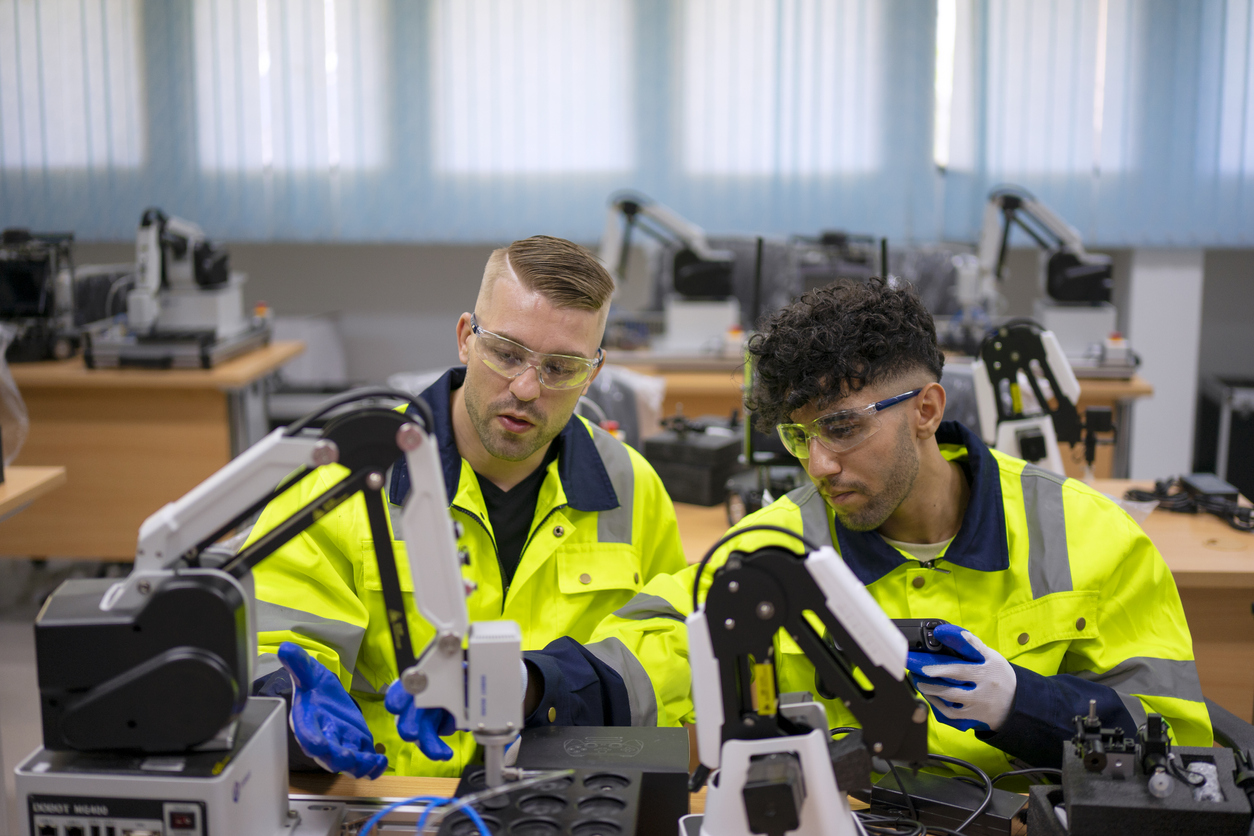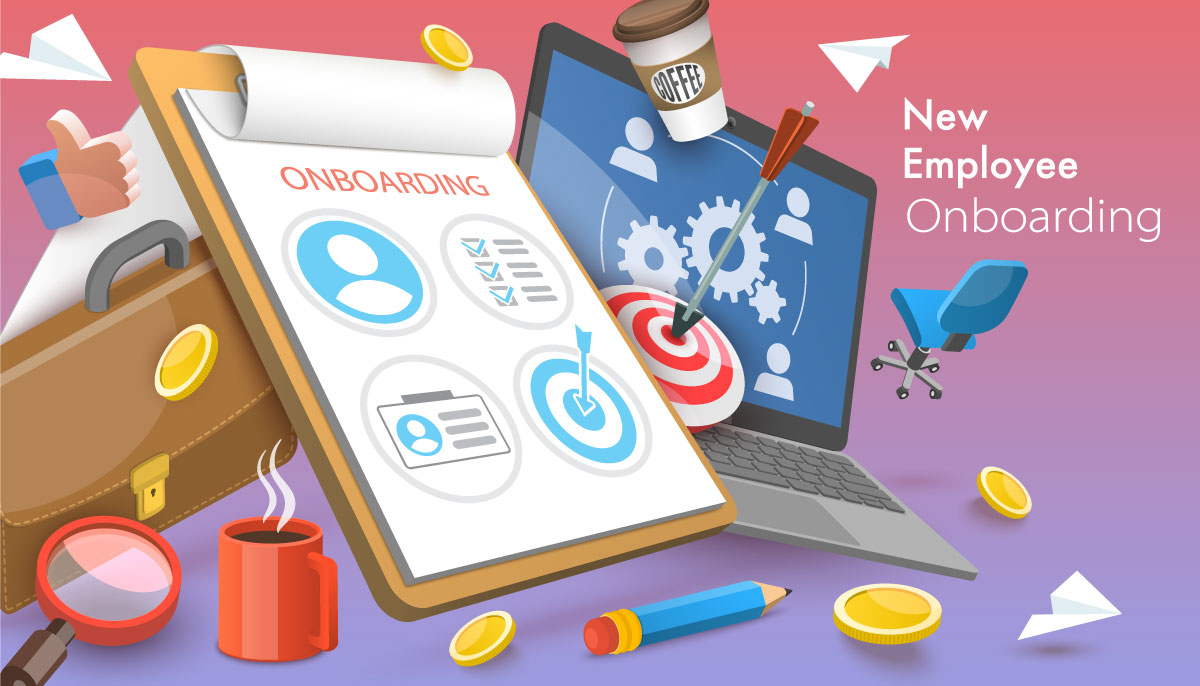TABLE OF CONTENTS
Training employees is an essential part of any organization’s success.
It helps ensure that employees are competent and confident in performing their duties, ultimately improving productivity and profitability. However, training is only effective when it is done correctly. This training course will focus on the most effective ways to train employees, including the four tenants of teaching: tell them, show them, have them do it, and give them feedback.
Using ineffective training protocols can have a range of negative impacts on a company.
Here are some statistical downfalls of companies using ineffective training protocols:
High Turnover Rates: Studies have found that employees who receive inadequate training are more likely to leave their jobs, resulting in high turnover rates. According to the Society for Human Resource Management, it can cost up to 50-60% of an employee’s annual salary to replace them.
Decreased Productivity: Inadequate training can result in decreased productivity, as employees may not have the necessary skills or knowledge to perform their jobs effectively. The American Society of Training and Development found that companies that invest in employee training and development have 218% higher income per employee than those that don’t.
Increased Errors and Accidents: Employees who receive inadequate training are more likely to make errors and have accidents, which can result in increased costs and potential legal liabilities. According to a study by OSHA, inadequate training is one of the leading causes of workplace accidents.
Poor Customer Service: Inadequate training can result in poor customer service, which can lead to decreased customer satisfaction and lost business. A study by PwC found that 1 in 3 customers will leave a brand they love after just one bad experience.
Lower Employee Engagement: Inadequate training can also lead to lower employee engagement, as employees may feel unsupported and undervalued. According to Gallup, only 13% of employees worldwide are engaged at work, and ineffective training can be a contributing factor to low engagement levels.

How to Make Sure You Are Using the Exact Methods of Training? Let’s start here:
Section 1: Understanding the Learning Process
Before we dive into the four tenants of teaching, it’s essential to understand the learning process. Learning is a complex process that involves acquiring knowledge, skills, and values. The process of learning involves several stages, including:
Attention: The learner must be attentive and engaged in the learning process.
Retention: The learner must retain the information that they have learned.
Reproduction: The learner must be able to reproduce the information that they have learned.
Motivation: The learner must be motivated to apply the information that they have learned.
Understanding these stages is crucial to effective training. When designing a training program, it is essential to consider these stages to ensure the training is effective.
Section 2: The Four Tenants of Teaching
The four tenants of teaching are to tell them, show them, have them do it, and give them feedback. These four tenants are the cornerstone of effective training.
Tell Them
The first step in training is to tell the employee what they need to know. This step involves presenting the information the employee needs to learn clearly and concisely. The information should be organized logically and presented in a way that is easy to understand. Some tips for telling employees include:
- Use clear and concise language.
- Avoid jargon or technical terms.
- Use visual aids to help explain complex concepts.
- Break down information into manageable chunks
Show Them
Once the employee understands the information, the next step is to show them how to do it. This step involves demonstrating the skills or techniques the employee needs to learn. This step is crucial as it lets the employee see how the skills or techniques are correctly done. Some tips for showing employees include:
- Demonstrate the skills or techniques slowly and clearly
- Use visual aids to help illustrate the steps involved
- Explain each step as you go
- Allow the employee to ask questions
Have Them Do It
The next step is to have the employee do it. This step involves allowing the employee to practice the skills or techniques they have learned. This step is important as it allows employees to gain hands-on experience and develop skills. Some tips for having employees do it include:
- Provide a safe and supportive environment for the practice
Start with simple tasks and gradually build up to more complex ones
Offer constructive feedback and guidance as needed
Allow the employee to make mistakes and learn from them
Give Them Feedback
The final step is to give the employee feedback. This step involves providing the employee with feedback on their performance. Feedback is crucial as it helps employees understand where they are doing well and where they need to improve. Some tips for giving employees feedback include:
- Be specific and detailed in your feedback
- Focus on both strengths and areas for improvement
- Offer constructive criticism and suggestions for improvement
- Give feedback regularly to help the employee improve over time
In my experience, most managers only train using Tell them and Show them. That is a faster approach but is highly ineffective. All four tenants must be included, even if it takes additional time and tools.

How Do Employees Retain Knowledge?
Research has shown that people retain information differently depending on how it is presented to them. Here are some statistics on how humans retain what they are told, what they see, and what they do:
What They Are Told: People typically retain about 10% of what they are told, according to Edgar Dale’s Cone of Learning. This means that traditional lecture-style training may not be the most effective way to deliver information to participants. To improve knowledge retention, trainers should consider incorporating more interactive elements like discussions, group activities, and simulations.
What They See: People retain approximately 65% of the information presented through visual aids, such as images, videos, and diagrams, according to the Social Science Research Network. This means that using visual aids can be an effective way to reinforce learning and improve knowledge retention.
What They Do: According to the National Training Laboratories, people retain approximately 90% of information that they put into practice immediately. This means that hands-on training, such as simulations, role-playing, and on-the-job training, can improve knowledge retention and ensure participants can apply what they have learned in real-life situations.
In summary, research suggests that people retain only a small percentage of what they are told but more of what they see and do. This emphasizes the importance of incorporating visual aids and interactive elements, such as hands-on training and real-life scenarios, into training programs to improve knowledge retention and ensure that participants can apply what they have learned in their jobs.
Include Testing to Ensure Retention
Including a quiz or test as part of the training can effectively assess employee learning and ensure that they have retained the necessary knowledge and skills. Here are some reasons why including a quiz or test is important for training employees:

Measures Knowledge Retention: Quizzes or tests provide a way to measure employee knowledge retention. By testing employees’ knowledge, trainers can identify areas where employees need more support and provide additional training where necessary.
Reinforces Learning: Quizzes or tests can be used to reinforce learning. By testing employees on what they have learned, they are more likely to remember the information, and the training becomes more meaningful and valuable to them.
Motivates Learning: Quizzes or tests can be used to motivate learning. When employees are aware that there will be a test, they are more likely to pay closer attention during training and study harder to perform well on the test.
Identifies Weaknesses: Quizzes or tests can identify areas where employees may be struggling, allowing trainers to provide additional support and help them overcome their weaknesses.
Provides Feedback: Quizzes or tests provide employees with feedback on their performance. By receiving feedback, employees can identify areas where they need to improve and work towards mastering the necessary skills.
Ensures Compliance: Quizzes or tests can be used to ensure that employees have received and understood important information, such as safety procedures, company policies, or legal regulations.
Here’s an example training quiz on how to build a widget:
What are the steps involved in building a widget?
a. Cut the materials, assemble the parts, and test the product
b. Test the product, cut the materials, and assemble the parts
c. Assemble the parts, cut the materials, and test the product
d. Test the product, assemble the parts, and cut the materials
What is the purpose of testing the product during the widget-building process?
a. To identify any defects or quality issues
b. To increase the production speed
c. To reduce the amount of material used
d. To save time
Which of the following tools is used to cut the materials during the widget-building process?
a. Screwdriver
b. Hammer
c. Saw
d. Wrench
How do you know when you have assembled the widget correctly?
a. When all the parts are used up
b. When the widget looks the way it should and fits together smoothly
c. When the widget is built in the shortest time possible
d. When the widget has the highest number of parts
What should you do if you encounter a problem during the widget-building process?
a. Keep working and ignore the issue
b. Ask for help from a colleague or supervisor
c. Take a break and come back later
d. Quit the task and move on to another one
Answers:
a
a
c
b
b
This quiz assesses employee understanding of the steps involved in building a widget, the importance of testing the product, using tools during the process, identifying correct assembly, and what to do when encountering a problem. By testing employee knowledge, trainers can identify areas needing additional training and support to ensure that employees have mastered the necessary skills to build a widget.
In summary, including a quiz or test as part of the training process is essential to ensure that employees have retained the necessary knowledge and skills. It helps measure knowledge retention, reinforce learning, motivate learning, identify weaknesses, provide feedback, and ensure compliance. By including a quiz or test, trainers can improve the effectiveness of the training and set employees up for success in their roles. Quizzes also support the four tenants of teaching that often are left out of the training protocols.
Section 3: Implementing Effective Training
Now that we have covered the four tenants of teaching, it’s time to discuss how to implement effective training. Implementing effective training involves several steps, including:
Assess the Training Needs of Training Existing Employees
The first step is to assess the training needs of the organization. This step involves identifying the skills and knowledge that employees need to perform their duties effectively. To assess the training needs, you can use methods such as:
- Conducting a skills gap analysis to identify the difference between employees’ current skills and knowledge and skills and knowledge required for the job.
- Surveying employees to gather their feedback and suggestions for training needs.
- Analyzing the performance data to identify areas of weakness that need improvement.
- Develop a Training Plan
- After assessing the training needs, the next step is to develop a training plan. The training plan should be tailored to the organization’s and the employees’ specific needs.
 Some tips for developing a training plan include:
Some tips for developing a training plan include:
- Define the goals and objectives of the training program.
- Determine the training methods and tools to be used.
- Develop a schedule and timeline for the training program.
- Identify the trainers or instructors who will deliver the training.
- Deliver the Training.
Use Refresher Training: Current employees may need refresher training to update their skills, stay current with company policies, and learn new techniques. This training should focus on advanced skills and be designed to build upon their existing knowledge.
Offer Cross-Training Opportunities: Cross-training can be an excellent way to keep employees engaged, learn new skills, and prepare them for future roles. This training can help increase productivity, build better team dynamics, and create a sense of versatility.
Encourage Ongoing Learning: Encouraging ongoing learning and development is essential to keeping employees engaged and motivated. Offer opportunities for continuing education, such as attending industry conferences, online training courses, or workshops. This approach can help employees stay up-to-date with the latest trends, technologies, and best practices.
The next step is to deliver the training.
When delivering the training, it’s essential to consider the four tenants of teaching. Some tips for delivering effective training include:
- Use various training methods, such as classroom, on-the-job, e-learning, and simulations.
- Use visual aids and other tools to enhance the learning experience.
- Incorporate real-life scenarios and case studies to make the training more relevant and engaging.
- Encourage interaction and participation from employees.
- Evaluate the Training
The final step is to evaluate the effectiveness of the training.
Evaluating the training helps identify areas that need improvement and ensure that the training program meets its goals and objectives. Some tips for evaluating the training include:
- Use feedback from employees to assess the effectiveness of the training.
- Measure the training results, such as performance or productivity improvements.
- Analyze the training data to identify areas of strength and weakness.
- Use the evaluation results to make improvements to the training program.
Training your employees is a critical part of any organization’s success. Effective training can improve employee performance, productivity, and job satisfaction. To ensure that training is effective, it’s essential to follow the four tenants of teaching: tell them, show them, have them do it, and give them feedback. Organizations can develop and deliver effective training programs that improve their employees’ skills, knowledge, and performance by implementing these tenants and following the steps outlined in this training course.

Training New Hires
Training new hires and current employees require different approaches, as new hires typically require more foundational training, while current employees may need more advanced training.
Training new employees effectively is crucial to their success and the organization’s success. Here are some additional tips on how to train new employees effectively:
Provide a Comprehensive Onboarding Program: When it comes to new hires, it’s essential to provide a comprehensive onboarding program. This program should cover everything from company culture to job responsibilities, policies, and procedures. A well-designed onboarding program can help new hires feel welcome, reduce the time it takes to get up to speed and ensure they are set up for success.
Are you looking to set your new employees up for success? If so, let us help you and unlock the mysteries of the onboarding process. Our Setting New Employees Up For Success course will take you through all twenty best practice elements needed to create a results-driven procedure that correctly sets up each new team member.

Focus on Foundational Skills: Since new hires are just starting, it’s crucial to focus on foundational skills. This training should be more basic and cover the basics of the job, such as how to use the tools, equipment, and software. It’s important to ensure that new hires understand the fundamentals before moving onto more advanced skills.
Use a Hands-On Approach: New hires are likely to learn better through hands-on training. Consider offering on-the-job training and job shadowing opportunities to provide real-life examples of how to perform the job. This approach can also help them get comfortable with their surroundings and build confidence.
Set Clear Expectations: Clearly communicate what is expected of the new employee in terms of job responsibilities, performance expectations, and behavior standards. This will help them understand what they need to do to be successful in their role.
Use a Structured Training Program: A structured training program can help new employees learn the necessary skills and knowledge efficiently. A program should be designed to cover all essential topics, with a focus on building foundational skills.
Provide Context: It’s essential to provide context to new employees on how their role fits into the organization and how they contribute to the company’s overall goals. This can help them understand the importance of their role and what they need to do to help the organization succeed.
Assign a Mentor or Buddy: Assigning a mentor or buddy to new employees can help them feel more comfortable and confident in their role. This person can provide guidance and support, answer questions, and help them get acclimated to the company culture.
Use a Variety of Training Methods: Incorporating a variety of training methods can help keep new employees engaged and facilitate learning. This can include hands-on training, e-learning, job shadowing, and more.
Offer Feedback and Recognition: Regular feedback and recognition can help new employees stay motivated and engaged. Provide positive feedback when they are doing well and constructive feedback when there are areas for improvement.
Just-in-time training (JITT) is a training approach that provides employees with the necessary knowledge and skills at the time when they need it.
This approach is particularly important for new employees, who may face a steep learning curve as they start their new role. Here are some reasons why just-in-time training is crucial for new employees:
Reduces Overwhelm: New employees can feel overwhelmed by the amount of information they need to learn. JITT allows them to focus on the specific skills and knowledge they need for their current task without getting sidetracked by irrelevant information.
Increases Retention: JITT provides employees with training at the moment when they need it the most. This means that the training is more relevant and likely to be retained as applied to a specific task. By providing training when the employee needs it, they are more likely to remember the information and apply it in the future.
Improves Performance: JITT helps new employees quickly gain the skills and knowledge they need to perform their job effectively. This approach can help reduce errors, increase productivity, and improve job satisfaction.
Facilitates Learning: JITT allows new employees to learn in a way that works best for them. By providing training in small, bite-sized pieces, they can learn at their own pace and focus on the areas they need the most help with.
Saves Time and Money: By providing training when it is needed, companies can save time and money on training costs. Employees can learn on the job, which means that training time can be reduced, and new employees can become productive faster. By providing employees with the necessary training at the time when they need it, companies can set their new employees up for success and improve their overall performance.
Evaluate the Training Program: After the training is complete, it’s essential to evaluate the effectiveness of the training program. This can be done through surveys, focus groups, or data analysis. Use the results to make adjustments and improvements to the training program for future new hires.
In summary, the training approach should be tailored to the specific needs of new hires and current employees. While new hires require foundational training, current employees may need advanced training or refresher training to keep their skills up-to-date. Providing hands-on training, refresher courses, cross-training opportunities, and ongoing learning can help organizations build a well-trained and highly skilled workforce.





